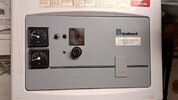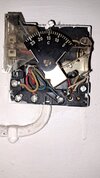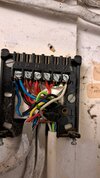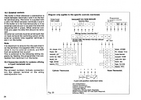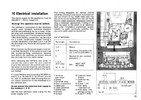That red is going to terminal 3.
Thanks.
The wiring behind the LP241 seems truly bizarre!
The LP241 is a dual channel programmer with a standard layout...
There appear to be two red link wires that join L, with terminals 1 and 2.
This is odd, but not a big problem. HW off and CH off, aren't used in many systems.
In this case they will remain permanently live.
We can ignore the second cable from the left - this appears to be a red & black, twin and earth that is providing the incoming power to L and N.
The white sheathed flex goes to the boiler and only uses:
Red - L
Blue - N
Earth - E
White - 3
I believe the red is a brown and the white is really a grey, but that isn't important.
The grey wire connects to terminal 4 on the LP241 - this is the CH on terminal.
As soon as CH is timed on the LP241, the boiler will fire, the thermostat is bypassed.
If the 2nd cable from the left (with the red, yellow and blue wires), is the cable to the thermostat, then the red wire (and hence the stat) receives power when H/W is turned on.
When the stat operates, the yellow wire is a switched live, and that connects to the grey wire on terminal 4; completing the circuit and firing the boiler.
The 3rd cable from the left is another red & black, twin and earth.
The red wire is connected to a permanent live, the black wire appears to be connected to HW on.
There does not appear to be a neutral connected to this cable, so it can't power anything like a pump, or a valve; although it could be something like a tank thermostat, or another switch.
So from what I can gather. If CH is turned on by the LP241, the boiler fires and remains on without any stat control.
If HW is turned on, but CH is off, the stat becomes operational, and turns the boiler on, when the stat calls for heat.
If CH and HW are both off, if the 'switch' (or whatever it is), on the third wire closes, then the black wire on terminal 3 would become live. This brings the stat into operation and turns the boiler on when the stat calls for heat.
I may be completely wrong in my interpretation, but I haven't seen anything like this before; it would be interesting to know what is connected to the third wire from the left!


